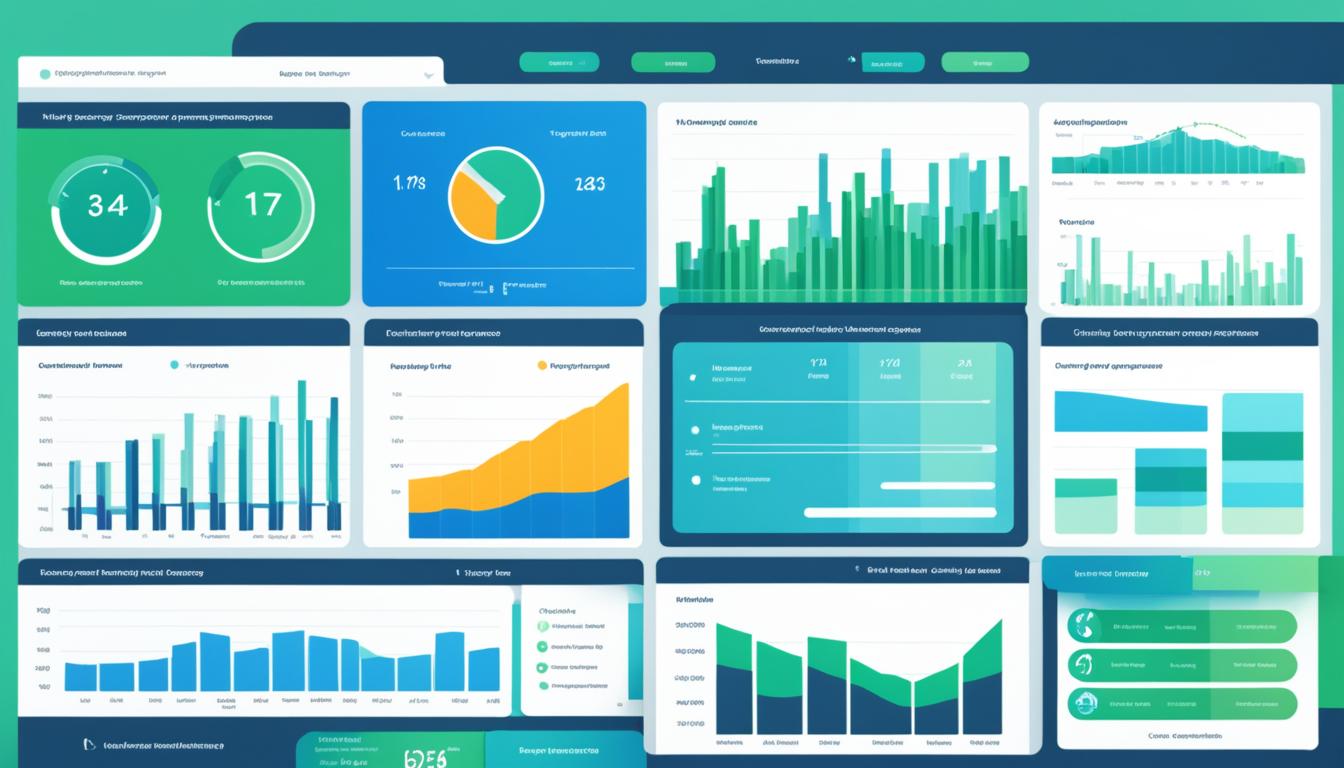Imagine a bustling office filled with dedicated employees working diligently to meet deadlines and achieve targets. But despite their efforts, productivity seems to be constantly slipping through the cracks. The team is struggling to communicate effectively, tasks are getting lost in the shuffle, and collaboration is hindered by a lack of visibility.
Such was the case at XYZ Corporation, a fast-growing company that was grappling with workflow inefficiencies. With deadlines missed and client satisfaction dwindling, the team knew they needed a solution to optimize their workflow and enhance their team dynamics.
Enter team dynamics software, a powerful tool designed to streamline communication, track performance, and improve collaboration. XYZ Corporation wasted no time in implementing this team collaboration tool, and the results were almost immediate. The software provided a centralized platform where team members could communicate, share files, and track progress in real-time.
With the power of team dynamics software, the XYZ Corporation team was able to overcome their hurdles and achieve new levels of productivity. Deadlines were met with ease, tasks were efficiently assigned and completed, and collaboration flourished like never before. The team dynamics software became an invaluable asset, enabling the team to work together seamlessly and optimize their workflow for optimal performance.
Key Takeaways:
- Team dynamics software can enhance communication, track performance, and improve collaboration.
- Implementing team dynamics software can streamline workflows and optimize productivity.
- Real-time visibility and centralized communication can lead to more efficient task management.
- Team collaboration tools offer a platform for seamless collaboration and file sharing.
- By utilizing team dynamics software, businesses can create a positive work environment and achieve their goals more effectively.
Importance of Team Dynamics in Workflow Optimization
Team dynamics play a significant role in optimizing workflows within organizations. Positive team dynamics contribute to improved communication, collaboration, and alignment, resulting in more efficient workflows and higher job satisfaction. Conversely, negative team dynamics, such as weak leadership, excessive deference to authority, and the lack of conflict resolution skills, can hinder productivity and decision-making.
Creating a positive work environment where team members feel comfortable expressing their ideas and opinions is crucial for fostering positive team dynamics. When team members can openly communicate, collaborate effectively, and align their goals, they can optimize their workflows and achieve better outcomes.
Open communication allows team members to exchange ideas, solicit feedback, and share valuable insights. Collaborating effectively enables teams to work together towards common objectives, leveraging each member’s strengths and expertise. Alignment ensures that everyone understands the goals, priorities, and expectations, allowing for streamlined decision-making and task allocation.
By prioritizing positive team dynamics, organizations can implement strategies to foster a supportive and inclusive work environment, leading to enhanced workflow optimization. This includes promoting effective leadership, providing opportunities for skill development and growth, encouraging teamwork, and fostering a culture of trust and respect.
Positive Team Dynamics Benefits:
- Improved communication and collaboration
- Efficient workflows
- Higher job satisfaction
- Enhanced decision-making
- Increased innovation and creativity
Negative Team Dynamics Challenges:
- Decreased productivity
- Limited information sharing
- Ineffective problem-solving
- Conflict and tension
- Low morale and engagement
Organizations that recognize the importance of positive team dynamics and actively work towards fostering a collaborative and supportive culture can unlock the full potential of their teams, leading to optimized workflows and improved business outcomes.
Effective Strategies for Workflow Optimization
To optimize workflows and improve productivity, organizations can implement several effective strategies. By defining clear processes, analyzing the current workflow, gathering feedback from team members, automating repetitive tasks, integrating with existing tools, and continuously monitoring and refining the workflow, businesses can streamline their operations and enhance team productivity.
Defining Clear Processes:
One of the first steps in workflow optimization is to define clear processes. This involves mapping out each step of a task or project and identifying the roles and responsibilities of team members involved. By establishing a well-defined process, teams can avoid confusion, reduce errors, and ensure efficient execution.
Analyzing the Current Workflow:
Before making any changes, organizations should analyze their current workflow to identify bottlenecks and areas that can be improved. This analysis can be done by reviewing data, conducting surveys or interviews with team members, and seeking feedback on pain points and challenges they face during the workflow. Understanding the current state of the workflow is crucial for implementing effective optimization strategies.
Gathering Feedback from Team Members:
Team members are valuable sources of insight when it comes to workflow optimization. Their firsthand experience and perspectives can reveal inefficiencies and opportunities for improvement. By actively listening to and incorporating their feedback, organizations can foster a collaborative environment and make informed decisions to optimize workflows.
Automating Repetitive Tasks:
Automation is a powerful tool for workflow optimization. By automating repetitive and time-consuming tasks, teams can save valuable time and redirect their efforts towards more critical and strategic activities. Utilizing automation tools and technologies can streamline processes, reduce errors, and enhance overall efficiency.
Integrating with Existing Tools:
To optimize workflows, it is essential to integrate with existing tools and systems that team members are already familiar with. By leveraging collaboration tools, project management software, and other relevant tools, organizations can enhance communication, centralize information, and facilitate seamless collaboration among team members.
Continuously Monitoring and Refining the Workflow:
Workflow optimization is an ongoing process. Organizations should establish mechanisms to monitor and measure the effectiveness of implemented changes. By regularly evaluating key performance indicators, tracking goals, and adapting the workflow as needed, businesses can ensure continuous improvement and maintain optimal productivity.
Collaboration Tools for Workflow Optimization
Collaboration tools play a vital role in optimizing workflows and enhancing team productivity. These tools provide a centralized platform for communication, task management, and sharing of files and documents. By utilizing collaboration tools, teams can streamline their work processes, improve coordination, and track progress efficiently.
Some popular collaboration tools for workflow optimization include:
- Trello: A project management tool that allows teams to manage projects, track goals, and collaborate on tasks using customizable boards and lists.
- Slack: A communication platform that enables real-time messaging, file sharing, and integration with other tools, fostering seamless collaboration among team members.
- Asana: A powerful project management tool that helps teams manage tasks, assign roles and responsibilities, and track progress towards goals and deadlines.
- Jira: A versatile tool widely used for agile project management, allowing teams to plan and track work, assign tasks, and manage sprints and backlogs.
- Google Workspace: An integrated suite of productivity tools, including Google Docs, Sheets, and Drive, which enable real-time collaboration on documents, spreadsheets, and files.
By leveraging these collaboration tools and incorporating effective strategies for workflow optimization, organizations can enhance team dynamics, improve productivity, and achieve their business goals more efficiently.

Case Study: ABC Manufacturing’s Workflow Optimization Journey
ABC Manufacturing, a leading company in the manufacturing industry, encountered significant challenges resulting from delays, errors, and low customer satisfaction due to an inefficient workflow. Recognizing the need for improvement, the company embarked on a comprehensive workflow optimization journey to address their pain points and create an optimized workflow that would yield remarkable results.
ABC Manufacturing’s approach to workflow optimization consisted of several key steps:
Identifying the Problem
The first step in their journey was identifying the specific pain points and bottlenecks in their workflow. By conducting a thorough analysis of their current processes, they were able to pinpoint areas that required immediate attention and refinement.
Analyzing Pain Points
Next, ABC Manufacturing meticulously analyzed the pain points they had identified. They examined the root causes of delays, errors, and customer dissatisfaction and delved deeper into the underlying issues affecting their workflow efficiency.
Designing an Optimized Workflow
With a clear understanding of their pain points, ABC Manufacturing proceeded to design an optimized workflow that would streamline processes, eliminate bottlenecks, and maximize efficiency. They carefully defined roles, responsibilities, and task sequences, ensuring seamless communication and collaboration among team members.
Implementing Changes
Having designed the optimized workflow, ABC Manufacturing implemented the necessary changes across their entire organization. They effectively communicated these changes to their employees and provided the necessary training and resources to ensure a smooth transition from the old workflow to the new, improved system.
Monitoring and Refining the Results
ABC Manufacturing understood the importance of continuous improvement, so they closely monitored the outcomes of their workflow optimization efforts. They tracked key performance indicators, gathered feedback from employees and customers, and made further refinements based on the data and insights obtained.
The results of ABC Manufacturing’s workflow optimization journey were impressive. By addressing their pain points and implementing an optimized workflow, the company achieved:
- Improved operational efficiency
- Enhanced communication and collaboration
- Reduced costs
- Higher customer satisfaction
- Business growth and expansion
- Increased productivity and quality

The above image exemplifies the positive impact that an optimized workflow can have on business performance.
This case study highlights the benefits of workflow optimization and serves as a testament to the power of addressing pain points and creating an optimized workflow. By taking proactive measures to streamline processes and improve efficiency, businesses can achieve remarkable results and create a competitive advantage in their industry.
Conclusion
Workflow optimization is a crucial aspect of business operations that can significantly impact productivity, efficiency, and customer satisfaction. By implementing effective strategies such as defining clear processes, gathering feedback from team members, automating tasks, and utilizing collaboration tools, organizations can optimize their workflows and enhance team dynamics.
One of the key tools that businesses can leverage for workflow optimization is team dynamics software. This software streamlines communication, tracks team performance, and improves collaboration among team members. By utilizing team dynamics software, organizations can ensure that everyone is on the same page, tasks are assigned appropriately, and the workflow is streamlined for optimal productivity.
Furthermore, incorporating workflow optimization strategies not only improves business efficiency but also creates a positive work environment. Efficient workflows eliminate bottlenecks, reduce errors, and enhance decision-making processes. This leads to improved job satisfaction, increased employee engagement, and a more harmonious working environment.
In conclusion, optimizing workflow using effective strategies and leveraging team dynamics software can drive business success. By implementing workflow optimization strategies and utilizing the right tools, businesses can achieve their goals more effectively, optimize team performance, and create a work environment that fosters productivity and success.
FAQ
What is team dynamics software?
Team dynamics software is a tool that helps organizations enhance communication, track team performance, and optimize their workflow for optimal productivity.
How does team dynamics software improve workflow optimization?
Team dynamics software improves workflow optimization by facilitating open communication, collaboration, and alignment among team members. It also allows for better decision-making and conflict resolution.
What is the importance of team dynamics in workflow optimization?
Positive team dynamics, such as open communication, collaboration, and alignment, can lead to more efficient workflows and higher job satisfaction. Negative team dynamics, on the other hand, can hinder productivity and decision-making.
What are some effective strategies for workflow optimization?
Effective strategies for workflow optimization include defining clear processes, analyzing the current workflow, gathering feedback from team members, automating repetitive tasks, integrating with existing tools, and continuously monitoring and refining the workflow.
How can project management software and collaboration tools help with workflow optimization?
Project management software and collaboration tools can help with workflow optimization by providing a centralized platform for managing projects, setting and tracking goals, defining roles and responsibilities, and facilitating seamless communication and collaboration among team members.
How can workflow optimization benefit businesses?
Workflow optimization can benefit businesses by improving efficiency, enhancing communication and collaboration, reducing costs, increasing customer satisfaction, driving business growth, improving productivity, and ensuring high-quality outputs.
Can you provide an example of a company that experienced successful workflow optimization?
ABC Manufacturing faced challenges with delays, errors, and low customer satisfaction due to an inefficient workflow. They embarked on a workflow optimization journey by identifying the problem, mapping the current workflow, analyzing pain points, designing an optimized workflow, implementing changes, and monitoring and refining the results. The company achieved improved efficiency, enhanced communication and collaboration, reduced costs, higher customer satisfaction, business growth, improved productivity, and quality.
How can team dynamics software help improve team performance?
Team dynamics software can help improve team performance by facilitating better communication, fostering collaboration, providing insights into individual and team contributions, tracking progress towards goals, and identifying any bottlenecks or areas for improvement.
What are some key features to look for in team dynamics software?
Some key features to look for in team dynamics software include real-time communication, task management, goal tracking, performance analytics, file sharing, document collaboration, and integration with other relevant tools and platforms.
How can organizations foster positive team dynamics?
Organizations can foster positive team dynamics by promoting open communication, encouraging collaboration, providing opportunities for skill development, offering recognition and rewards, promoting a culture of trust and respect, and addressing any conflicts or issues in a timely and fair manner.


